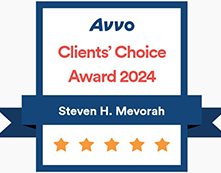Employment-Based Permanent Residence
 Most people who seek permanent residence in the United States tend to do so via family-based petitions. If someone has an immediate relative who is a U.S. citizen or permanent resident, they can apply for their spouse, child or parent to become a lawful permanent resident (LPR, or “green card” holder). However, it is also possible to become an LPR through your employer. The requirements are slightly different to those of a family-based petition, but if followed appropriately, the wait may be shorter than those for family categories.
Most people who seek permanent residence in the United States tend to do so via family-based petitions. If someone has an immediate relative who is a U.S. citizen or permanent resident, they can apply for their spouse, child or parent to become a lawful permanent resident (LPR, or “green card” holder). However, it is also possible to become an LPR through your employer. The requirements are slightly different to those of a family-based petition, but if followed appropriately, the wait may be shorter than those for family categories.
Categories
There are five different categories under which an employer may apply for you to become a permanent resident, though two are by far the most frequently used. The categories are:
- EB-1, also called first preference. This is a rarely-used category designed for people with extraordinary abilities, such as star athletes or Nobel Prize winners. This classification does not require a labor certification from the Department of Labor.
- EB-2, or second preference. This is for those with ‘exceptional’ abilities in similar areas, and also for advanced degree holders such as PhDs (or their equivalents, depending on the country).
- EB-3, which is by far the most commonly utilized category. This category is for “professionals [and] skilled workers,” which applies to the majority who seek to immigrate on a permanent basis.
- EB-4 or fourth preference. This is referred to as the category for “special” immigrants, including religious personnel, those affiliated with international organizations such as the North Atlantic Treaty Organization (NATO), and foreign-born employees of the U.S. Foreign Service. For example, a French national who worked at the U.S. embassy in Paris and wished to immigrate to the U.S. for another job would fall into this category.
- EB-5, fifth preference or the ‘entrepreneur’ category. This category is exclusively for those who invest between $500,000 and $1 million (depending on the investment area).
The Process
You may apply either from outside the United States or if you are already lawfully present. If you are already lawfully present in the United States, you may adjust status without having to leave. Either way, the main requirement is that you must have an offer of a permanent job from a United States company waiting for you before you will be given leave to apply. You do not necessarily have to be working for the company already, but you must have an offer of permanent employment (in other words, you must not be only a seasonal or otherwise temporary worker). Your future employer will sponsor you - that is, vouch for your character and ability to support yourself. They must submit a labor certification to the Department of Labor, which states that there are no U.S. workers that could conceivably do the job you have been offered. After the labor certification is approved, the visa form can be submitted, referred to as an I-140, Immigrant Petition For Alien Worker.
It is important to keep in mind that merely filing your paperwork does not mean your case will soon be decided. Once your paperwork has been accepted, you will be given what is called a priority date - for example, January 1, 2017. Since there is a quota for how many employment-based permanent resident visas the U.S. will grant in any given calendar year, each potential immigrant is given a priority date, and when that date becomes current (in the example, New Year’s Day 2017), then they can either adjust status or go through consular processing, depending on where they are located. If you are in another country, you will handle this process through the nearest U.S. embassy or consulate.
Ask For Experienced Professional Assistance
The process of obtaining permanent resident status is always a long and complex one, and it is a good idea for you to have as many resources and knowledgeable professionals on your side as possible. The passionate Chicagoland immigration attorneys at Mevorah & Giglio Law Offices are ready, willing and able to help you through the process. Call us today to set up an appointment
Source:
https://www.uscis.gov/working-united-states/permanent-workers
 English,
English,
 Spanish,
Spanish,
 Polish,
Polish,
 Urdu
Urdu












 Make a Payment
Make a Payment



